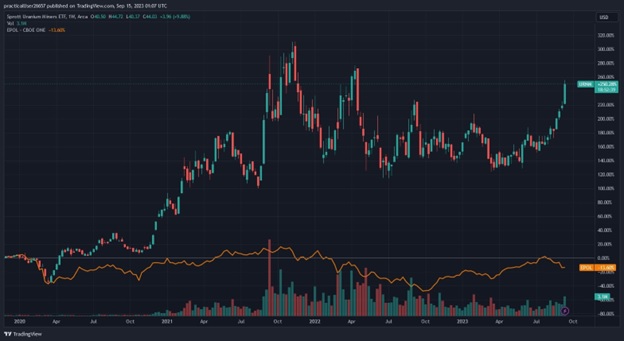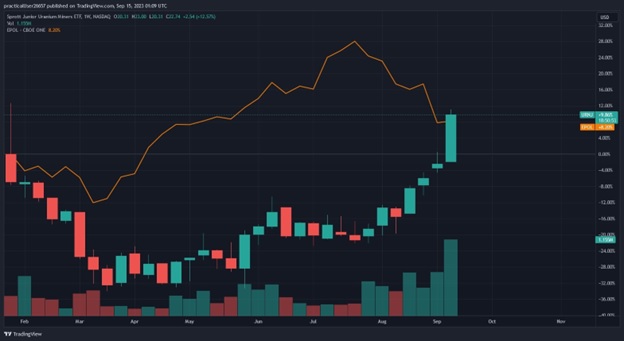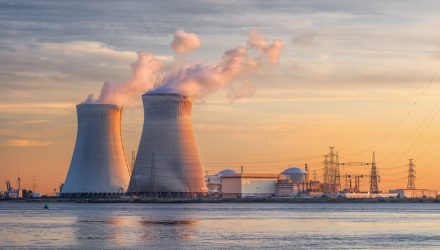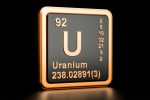Uranium prices have soared to the highest level in 10 years, surpassing $60 a pound early this month after eight straight weeks of gains. In fact, uranium prices are up 20% year to date in 2023, outperforming other metals, and they show no signs of slowing amid the ongoing supply risks and bullish long-term demand.
Supply & Demand for Uranium
Meanwhile, forecasts continue to grow amid expectations about the role nuclear energy could play in the transition to green energy. The World Nuclear Association (WNA) expects demand for global reactors will reach nearly 130,000 tons of uranium in 2040, up from an estimated 65,650 tons this year.
Even the WNA’s most pessimistic projection of 87,000 tons in 2040 represents a healthy increase in demand over the next seven years. The agency’s base-case scenario calls for 686 gigawatts of operable nuclear plants to be in operation by 2040, up from the current 391 gigawatts.
In addition to the green energy transition, which is boosting the demand side of the argument for uranium, other factors are also playing a role in boosting uranium prices on the supply side. For example, the coup in Niger threatens to crimp supply, albeit from a country that produced only 5% of the globally mined uranium in 2022.
Misinformation circulating online after the coup suggested that Niger’s new leaders had banned uranium exports to France, which was not true, although it did boost prices for a time. For now, mining operations continue in the African country. However, geopolitical instability in other regions, especially due to the war in Ukraine, is also impacting supply.
Why Uranium Miners Stand Out From Other Miners
For the most part, mining uranium is similar to mining other natural resources. However, in cases of extremely high-grade ore, extra safety measures must be taken to protect the miners, the environment, and the local population from radiation. In addition to mining, some extraction methods for uranium involve using chemicals.
Aside from the precautions that must be taken to protect against radiation, there are some other key differences between uranium miners and other miners. For example, there haven’t been any new uranium mines established in many years.
Spot prices for the radioactive element peaked at $143 a pound in 2007 before declining sharply during the next decade. The 2011 partial meltdown of the Fukushima nuclear power plant in Japan, which resulted from a major earthquake followed by a massive tsunami, led Japan and some other countries to take a step back from nuclear energy.
Despite the low prices for the radioactive natural resource, the uranium industry has been operating at a structural deficit since 2018. In fact, uranium producers have been hesitant to restart full operations due to skepticism about prices. According to S&P Global Market Intelligence, uranium miners have been looking for prices of at least $70 to $75 a pound before they will invest in major new capacity.
A Changing Tide
In fact, before 2021, uranium prices had plunged so much that Canada-based Cameco and several major producers in Kazakhstan idled their production capacity in 2017. However, the tide finally appears to be changing, creating a clear bull case for investing in uranium.
Cameco President and CEO Tim Gitzel said on an earnings call in October 2022 that he was “seeing governments and companies return to nuclear with an appetite that I’m not sure I’ve ever seen in my four decades in this business.”
While we remain well under the $70 a pound price that uranium miners want to resume production, it looks like the market is heading in that direction. In fact, another reason uranium prices remained so low was due to the existence of sizable uranium inventories.
However, we’re now starting to see those inventories head toward depletion, especially since it’s been years since any uranium producer has invested meaningfully in new supply. A depleting uranium supply is another bullish signal for the metal.
ETFs for Exposure to Uranium Mining
With uranium prices skyrocketing, it’s understandable that investors would seek exposure through exchange traded funds that offer positions in multiple miners. Two of the more well-known ETFs are the Sprott Uranium Miners ETF (URNM) and the Sprott Junior Uranium Miners ETF (URNJ), which are up 40% and 10% year to date, respectively.

The performance differential suggests that investors have more faith in the major uranium miners than they do in the smaller cap players. URNM tracks the North Shore Global Uranium Mining Index, which contains miners as well as holders of physical uranium.
Interestingly though, North Shore stated that this index is tilted toward junior miners rather than majors. URNM’s top 10 positions are: Cameco, NAC Kazatomprom, Sprott Physical Uranium Trust, NexGen Energy, Uranium Energy, Denison Mines, Energy Fuels, Paladin Energy, Boss Energy, and Yellow Cake.

Meanwhile, URNJ aims to provide results that are generally in line with the performance of the Nasdaq Sprott Junior Uranium Miners Index, which tracks micro-, small-, and mid-cap companies in the uranium mining sector. The ETF’s top 10 holdings are: Uranium Energy, NexGen Energy, Paladin Energy, Energy Fuels, Boss Energy, Deep Yellow, Denison Mines, Fission Uranium, Encore Energy, and Ur-Energy.
Of course, time will tell whether the bull case for uranium will play out and prices will rise to the level miners want in order to resume full production.
Charts via TradingView
For more news, information, and analysis, visit the Gold/Silver/Critical Materials Channel.








